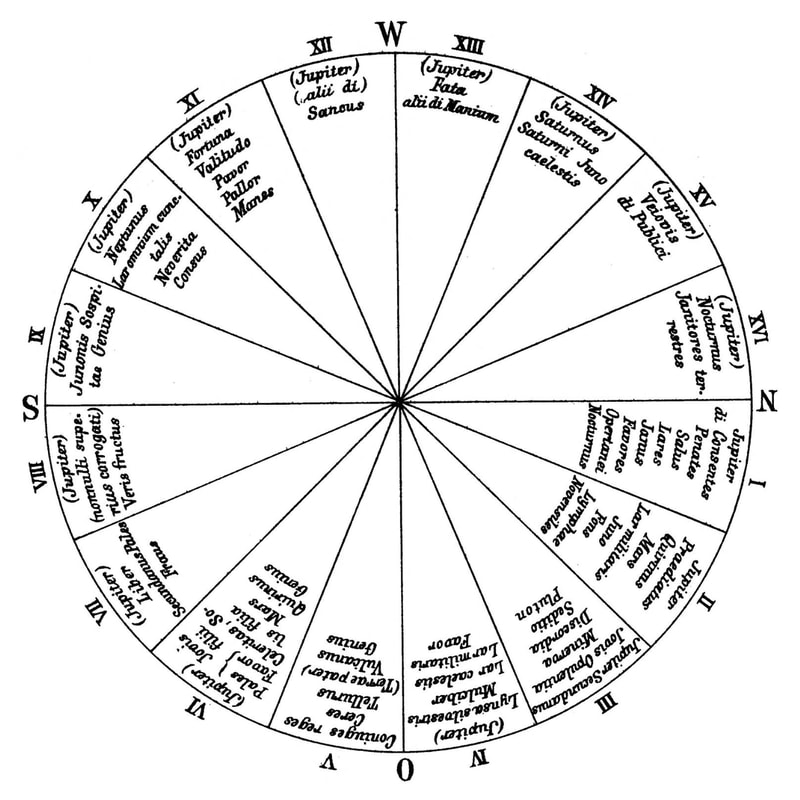|
The Disciplina Etrusca is a generical name for religious knowledge of the Etruscans. They had many different religious texts collected into books but unfortunately, we have only fragments today. However, these fragments reveal much about the Etruscans, their religion and the understanding of the world. The Etruscans considered their religion as “revealed” and respected their prophets as Tages and Vegoia. Unlike many other religions, their revelation was not about the existence of one or many gods and these texts are not about theology nor mythology. The Disciplina Etrusca is knowledge of rites and techniques one must perform in order to enter into divine space. The Etruscans had a very complex cosmology and they believed that every god acts within certain space. According to Disciplina Etrusca, the whole heavenly space is divided into sixteen areas and the circle of the horizon is divided into sixteen parts counted clockwise from the north. Every part of the sky belonged to one deity and deities were divided into four groups: the god of earth, sky, nature, and underworld.
The foundation of a new city was a very important event and Disciplina Etrusca contained a large number of secret rituals for that purpose. It is believed that those rituals were used for the foundation of Rome because Romans accepted a large number of Etruscan rituals. The most important part was the inauguration of space intended for the city and establishment of the sacred boundary for the city. Even in the Romulus and Remus myth, they observe birds to confirm divine approval for the foundation of the city. The rituals of the Etruscans had a purpose to reveal the functioning of the universe, the history, and the future. In other words, they believed that the whole visible world is a language and the divine reality communicate with man through nature. Therefore, they observed natural phenomena in order to predict the future or find out the will of gods. For the Etruscans, all occurrences in nature could be a sign from gods, even the usual ones as lightning or bird flight. Unusual events as comets or eclipses were especially significant and these occurrences were called ostenta in Latin – the miracles or omens. For predicting the future, they use animal sacrifices and reading the future from animal entrails. The liver was a very important organ in a search for right omens. The very important archaeological evidence is a bronze model of liver from Piacenza, 120-80 BC. It was a training model which used future priests so they could master making predictions. The Etruscans were preoccupied with destiny because they believed that everything is predetermined, man cannot change anything but only to find out before it happens. It is hard to imagine that today's inauguration of the presidents has anything to do with the Etruscans. Actually, it does a lot. In Ancient Rome no one could take a lead over people or start a war without consulting and interpreting the will of gods. The interpreters of divine will were augures, priests that used rituals to reveal the divine will based on birds, their number, and direction of flight. The rituals that Roman augures performed to reveal the divine will were inherited from Disciplina Etrusca. In other words, the real meaning of inauguration is – to ask birds whether something is according to the divine will.
0 Comments
Leave a Reply. |
AuthorPhoenix Voyagers Archives
January 2023
Categories |
|




 RSS Feed
RSS Feed




